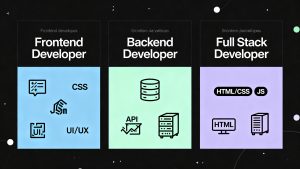Backend development rapidly evolves as new technologies and methodologies respond to business and operational demands. In 2025, six critical trends stand out, delivering greater efficiency, reliability, and security for modern applications.
Serverless Architecture: Scalability Without Maintenance
The adoption of serverless architecture is reshaping backend development by allowing teams to build applications without having to manage underlying infrastructure. Cloud platforms such as AWS Lambda, Google Cloud Functions, and Azure Functions automate resource allocation, scaling seamlessly to meet demand. This model minimizes operational costs by charging only for usage, and helps organizations avoid downtime during traffic surges—a vital feature for e-commerce and other high-volume services.
Recent advancements tackle well-known challenges: standardized interfaces enable easier transitions between providers, pre-warming and runtime optimizations reduce cold start delays, and multi-cloud deployment tools improve portability. Serverless databases offer automatic scaling, high availability, and geographic dispersion, sustaining robust global performance.
WebAssembly: Unlocking Speed and Platform Independence
WebAssembly (Wasm) lets developers run code at near-native speeds in browsers, boosting performance for demanding applications. Its platform-agnostic design supports languages such as Rust, C, and Go, and is gaining momentum for backend implementations. Cloud providers are leveraging Wasm for serverless environments and edge computing, offering fast startup times and lightweight reliability.
According to industry polls, more than half of serverless developers now use WebAssembly, though its ecosystem requires further maturation and standardization. Continued growth in open-source contributions and integration efforts will drive easier debugging, improved security, and broader adoption in the coming years.
GitOps: A Reliable Path to DevOps Excellence
GitOps is a strategy in DevOps that relies on Git as the central repository for managing infrastructure and code deployments. This approach aligns naturally with declarative cloud-native frameworks, especially Kubernetes, supporting automation and consistency for large-scale rollouts. In 2025, projections indicate over 90% of Kubernetes operations will utilize GitOps workflows, confirming its status as the new norm for reliable, secure deployments.
GitOps merges seamlessly with platform engineering, allowing teams to develop standardized self-service environments. Secure, policy-driven compliance is embedded directly into code repositories, reinforcing robust DevSecOps practices. Tools like Terraform further simplify resource management, streamlining project delivery and reducing error rates.
Edge Computing: Enhanced Speed and Responsiveness
Processing data closer to where it’s produced accelerates response times and eases server load. Edge computing is becoming essential for real-time applications—think IoT devices, VR/AR experiences, gaming, and autonomous vehicles. As 5G and IoT networks expand, platforms like AWS IoT Greengrass, Azure IoT Edge, and Google Edge Cloud empower distributed, high-performing backend systems.
Edge technologies offer robust security by keeping sensitive data local, minimizing exposure. Backend developers increasingly leverage edge computing to boost efficiency, enable global scaling, and deliver greater responsiveness.
Zero Trust: Modern Security, Total Verification
Zero trust strategy is transforming backend security. Rather than relying on perimeter-based defense, zero trust models assume all network activity could be compromised and verify every access attempt. This persistent verification reduces exposure, making it especially vital for remote workforces and cloud-based platforms.
Key developments include decentralized identity authentication, AI-powered API gateways, and dynamic policy enforcement using tools like Open Policy Agent (OPA). Enhanced data encryption—even during use—protects sensitive information for industries like finance and healthcare, which demand airtight security in backend operations.
Single Responsibility: Clarity and Adaptability for Complex Systems
The single responsibility principle, the backbone of modern software engineering, ensures each class or module in a backend system has one well-defined role. As backend architectures become more intricate, modular code improves clarity, simplifies maintenance, and supports easier testing. This principle aligns perfectly with microservices, where each service addresses a unique business function, enhancing change management and clean architecture best practices.
By decomposing code into focused, separated components, teams boost system reliability and adaptability, making it easier to update and scale backend services as business needs evolve.
Each of these trends is paving the way for robust, efficient, and secure backend ecosystems in 2025. Forward-thinking development teams are investing in serverless solutions, faster execution models, automated deployments, scalable edge infrastructure, security-first strategies, and modular design to stay competitive in a rapidly shifting landscape.Below is a fully rephrased, publication-ready article based on your provided content, written in third-person and optimized for SEO. Font size cues are suggested to distinguish headings and subheadings in your CMS (use larger font for headings, smaller for subheadings). All requested SEO metadata and a fresh article name are included.
Read more such articles from our Newsletter here.



